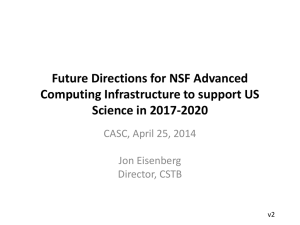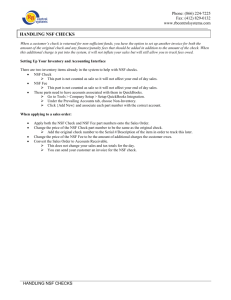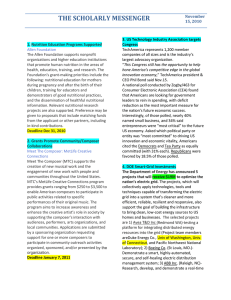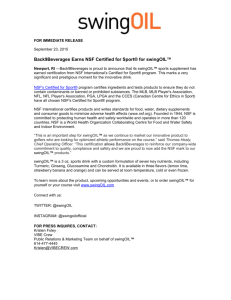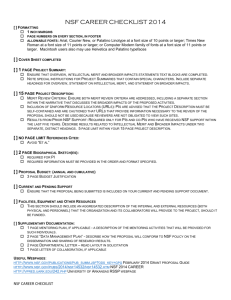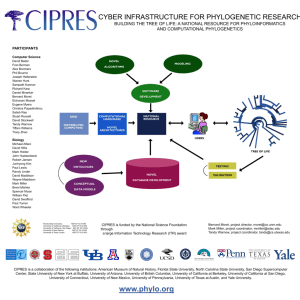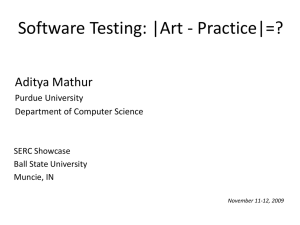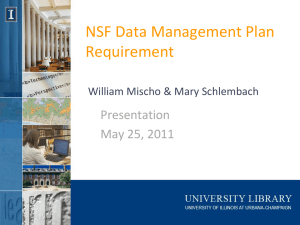Jon Eisenberg
advertisement
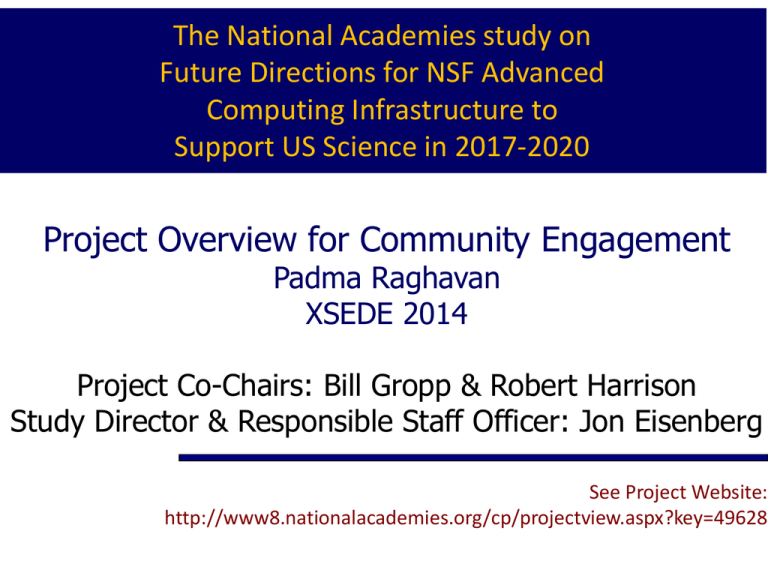
The National Academies study on Future Directions for NSF Advanced Computing Infrastructure to Support US Science in 2017‐2020 Project Overview for Community Engagement Padma Raghavan XSEDE 2014 Project Co-Chairs: Bill Gropp & Robert Harrison Study Director & Responsible Staff Officer: Jon Eisenberg See Project Website: http://www8.nationalacademies.org/cp/projectview.aspx?key=49628 Project Scope Examine anticipated priorities and associated tradeoffs for advanced computing in support of NSF-sponsored science and engineering research considering: The contribution of high end computing to U.S. leadership and competiveness in basic science and engineering and the role that NSF should play in sustaining this leadership Expected future national-scale computing needs: high-end requirements, those arising from the full range of basic science and engineering research supported by NSF, as well as the computing infrastructure needed to support advances in both modeling, simulation and data analysis Complementarities and tradeoffs that arise among investments in supporting advanced computing ecosystems; software, data, communications The range of operational models for delivering computational infrastructure, for basic science and engineering research, and the role of NSF support in these various models Expected technical challenges to affordably delivering the capabilities needed for world-leading scientific and engineering research Study committee William Gropp, UIUC (co-chair) Robert Harrison, Stony Brook/Brookhaven (co-chair) Mark R. Abbott, Oregon State David Arnett, Univ. of Arizona Robert Grossman, Univ. of Chicago/Open Data Group Peter Kogge, Notre Dame Padma Raghavan, Penn. State Daniel A. Reed, Univ. of Iowa Valerie Taylor, Texas A&M Katherine Yelick, UC Berkeley/LBNL Jon Eisenberg, National Academies study director Timeline and Reports Interim report (Summer 2014) to identify key issues and discuss potential options. 2017-2020 time frame Final report (2015) to include a framework for future decision-making about NSF’s advanced computing strategy and programs. 2017-2022 time frame. how to prioritize needs and investments and how to balance competing demands for cyberinfrastructure investments approach: identifying issues, explicating options, and articulating tradeoffs and general recommendations No recommendations concerning the level of federal funding for computing infrastructure How to Provide Comments Please send suggestions of information sources (people, reports, etc.) to the study director, jeisenbe@nas.edu Submit your comments on study topic via National Academies Current Projects system, http://tiny.cc/inputacistudy For more on project, follow www.cstb.org
